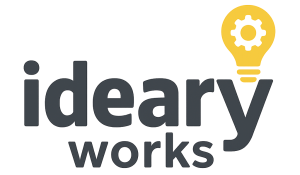Understanding the Zeigarnik Effect
The Zeigarnik Effect is a psychological phenomenon that highlights how individuals tend to remember unfinished tasks more vividly than those that have been completed. This effect was first identified by Russian psychologist Bluma Zeigarnik in the 1920s during her research on memory and cognition. She observed that waiters could remember orders that had not yet been served more accurately than those that had been fulfilled. This distinctive remembrance of incomplete tasks suggests that unresolved experiences remain mentally salient, which creates a sense of tension or cognitive dissonance in individuals until these tasks are resolved.
Several studies have since confirmed the Zeigarnik Effect, suggesting that the brain processes incomplete tasks differently from completed ones. One notable experiment demonstrated that participants were more likely to recall tasks that they had not finished compared to those they had completed. This suggests that our mind tends to actively retain information about tasks that require closure or resolution, emphasizing the significance of unfinished work in cognitive function.
The underlying theories of the Zeigarnik Effect indicate that individuals harbor an intrinsic motivation to complete unresolved tasks. This motivation stems from the psychological discomfort associated with having tasks incomplete, leading to a stronger memory representation of these tasks. As a result, people often find that they are compelled to revisit and complete outstanding tasks, which plays a critical role in effectively managing queues in various contexts, including theme parks and online platforms.
In web design, leveraging the Zeigarnik Effect can enhance user experience significantly. By structuring interfaces and interactions in such a way that prompts users to remember and engage with incomplete actions, designers can create an environment that encourages continued interaction. Understanding this psychological principle not only informs design choices but also provides insights into user behavior, ultimately leading to more efficient queue management and improved satisfaction.
The Role of Waiting in Theme Parks
In the context of theme parks, waiting is an intrinsic part of the overall guest experience. The act of queuing not only serves a practical purpose but also plays a significant role in shaping visitors’ psychological and emotional responses. When guests anticipate a thrilling ride or an immersive attraction, the waiting time can intensify their excitement and build a sense of community among fellow visitors. This anticipation is a crucial element of the experience, as it often enhances the perceived value and enjoyment of the attraction itself.
While waiting can create a heightened sense of excitement, it also poses several challenges regarding guest satisfaction. Long wait times can lead to frustration and anxiety, potentially detracting from the overall experience. Theme parks must navigate this fine balance between generating anticipation and minimizing negative emotions associated with prolonged queuing. Understanding the psychological aspects of waiting is essential for theme parks as they seek to provide a memorable experience for all visitors.
To successfully manage queues, theme parks employ several strategies aimed at improving guest satisfaction. These include the implementation of virtual queues, where guests can reserve their spot in line via mobile apps, allowing them to experience other attractions while they wait. Additionally, parks often enhance the queue experience itself by incorporating engaging theming, interactive elements, and entertainment options, transforming the wait into an enjoyable part of the experience. Through such strategies, theme parks can create a positive perception of waiting, ensuring that guests remain emotionally engaged and satisfied, even before they embark on their adventures.
By examining these psychological and experiential aspects of waiting, we can identify connections between queue management in theme parks and web design principles. Both realms aim to guide user experiences effectively, ensuring satisfaction and enjoyment throughout the entire journey.
Applying the Zeigarnik Effect to Web Design
The Zeigarnik Effect, a psychological phenomenon posited by the Russian psychologist Bluma Zeigarnik, refers to the tendency of individuals to remember uncompleted tasks better than completed ones. This principle can be effectively harnessed in web design to enhance user engagement and improve overall user experience. By integrating elements that create a sense of incompleteness or anticipation, designers can motivate users to remain engaged with platforms for longer periods.
One practical application of the Zeigarnik Effect in web design is the use of progress bars. These visual indicators provide users with a visual representation of their journey, outlining how much of a process has been completed and how much remains. By showing users their progress toward completion, these design features promote a sense of achievement and encourage them to continue. For instance, when users encounter a multi-step form, progress bars can effectively reduce abandonment rates, as they see that their journey is almost complete.
In addition to progress bars, incomplete forms can invoke the Zeigarnik Effect as well. When users fill out forms, such as registration or checkout fields, presenting certain sections as incomplete can compel them to finalize their submissions. Designers can highlight incomplete fields while subtly reminding users of the benefits awaiting them upon completion. This approach helps in maintaining user focus and ultimately increases the likelihood of conversion.
Moreover, incorporating pending interactions, such as notifications about unfinished transactions or reminders for cart items, can further engage users by leveraging their innate desire to complete tasks. By thoughtfully deploying these design strategies, web designers can create a framework that not only draws users in but also encourages them to pursue and complete their online journeys. This alignment of the Zeigarnik Effect with web design principles enables a more engaging and motivating user experience.
Case Studies and Practical Examples
The Zeigarnik Effect, which highlights the tendency of individuals to remember incomplete tasks better than those that are finished, has found practical applications in various industries, including theme parks and web design. By creating a sense of anticipation and incomplete engagement, organizations can significantly enhance user experience and satisfaction. This section delves into specific case studies that illustrate successful applications of the Zeigarnik Effect.
One notable example comes from Disneyland, where guests often encounter interactive queue lines. The design of these queues employs storytelling techniques that engage visitors with various elements that pique their curiosity. While waiting, guests are introduced to characters and narratives, keeping them emotionally invested in the unfolding experience. As a result, they report higher satisfaction levels despite the wait time, demonstrating the effectiveness of using the Zeigarnik Effect in managing queues.
In the realm of web design, consider an e-commerce platform that utilizes the Zeigarnik Effect in its shopping cart experience. When users add items to their cart, but do not complete the purchase, visual reminders and pop-ups can trigger their curiosity. For instance, a notification indicating a limited-time discount on the items in their cart prompts users to return and finalize their purchase. This strategy keeps engagement high while reinforcing the likelihood that visitors will convert, thereby harnessing the power of incomplete tasks.
However, integrating the Zeigarnik Effect is not without its challenges. Designers must be cautious not to overwhelm users with excessive prompts or reminders that may lead to frustration. Striking a balance between engagement and usability is crucial. By focusing on user-centered design principles, proper pacing, and contextually relevant cues, designers can effectively utilize the Zeigarnik Effect without compromising on user experience.



